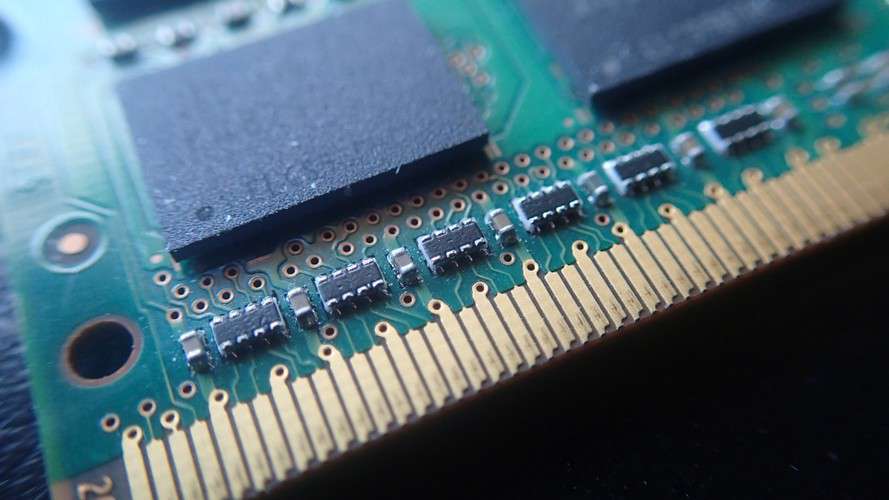Welcome to the fascinating world of 4 3 lenses and camera formats, where innovation and technological advancements converge to create stunning visual experiences. In this realm, the notion of 4:3 lenses becomes the driving force behind capturing breathtaking images with unrivaled precision and clarity. Whether you are an avid photographer, a curious enthusiast, or an aspiring filmmaker, understanding the intricacies of this format opens up a world of creative possibilities. But what exactly does "4:3" mean on a camera? How does it differ from micro 4:3 lenses? And how does one harness the power of these lenses to create masterpieces? Fear not, for in this comprehensive exploration, we will demystify the magic behind 4 3 lenses, shed light on camera formats, and unravel the mysteries of their equivalents. Join us on this captivating journey, as we delve deeper into the realm of 4 3 lenses and unlock the secrets behind their awe-inspiring capabilities.
What cameras use 4:3 lenses?
4:3 lenses are predominantly used in cameras that support the 4:3 camera format. These cameras are popular among photographers and filmmakers who seek a balanced aspect ratio that accommodates a wide range of shooting scenarios. One of the major camera manufacturers that extensively utilizes 4:3 lenses is Panasonic. Their line of Lumix cameras, such as the GH series, G series, and GX series, are renowned for their compatibility with 4:3 lenses. These cameras are designed to maximize the potential of 4:3 lenses, offering photographers and filmmakers the flexibility to capture stunning still images and high-quality videos. Additionally, several other camera brands including Olympus, Blackmagic Design, and Leica also support the use of 4:3 lenses in their respective camera models. Whether you are shooting landscapes, portraits, or videos, cameras that utilize 4:3 lenses open up a world of possibilities for capturing striking imagery.
What is 4:3 camera format?
The 4:3 camera format refers to the aspect ratio used in capturing images and videos on certain cameras. In this format, the width of the image frame is divided by the height, resulting in a ratio of 4 units to 3 units. This ratio provides a fairly square-shaped frame that is well-suited for various shooting scenarios. Unlike other common formats such as 16:9 (widescreen) or 3:2 (standard), the 4:3 aspect ratio offers a more balanced composition, making it particularly preferred for still photography. The 4:3 camera format is known for its versatility, allowing photographers to experiment with different compositions and capture a wider field of view. It also offers more compatibility with different lenses, making it a popular choice among professionals and enthusiasts alike. Whether you are shooting landscapes, portraits, or street photography, the 4:3 camera format can be a powerful tool in your creative arsenal.
What is the difference between micro 4:3 and 4:3 lens?
The main difference between micro 4:3 and 4:3 lenses lies in their physical size and overall compatibility with camera systems. To start, micro 4:3 lenses are specifically designed for cameras that support the Micro Four Thirds system, which is a mirrorless camera system jointly developed by Panasonic and Olympus. These lenses are characterized by their compact size and lightweight construction, making them extremely portable and ideal for travel or street photography. On the other hand, 4:3 lenses, also known as Four Thirds lenses, were designed for DSLR cameras. While they can also be used on Micro Four Thirds cameras with the help of an adapter, they tend to be larger and heavier compared to micro 4:3 lenses. Due to the difference in size and construction, micro 4:3 lenses are generally more suitable for mirrorless camera systems, offering a more seamless integration and optimized performance. However, both types of lenses can produce exceptional image quality and offer a wide range of focal lengths, allowing photographers to capture their desired shots with precision and creativity.

What does 4:3 mean on a camera?
When you see the aspect ratio mentioned as 4:3 on a camera, it refers to the specific ratio between the width and height of the image frame. In other words, for every 4 units of width, the image frame has 3 units of height. This particular aspect ratio, often pronounced as "four by three," has been a standard in the photography and video industry for many years. The 4:3 ratio provides a balanced and more square-shaped composition, which can be advantageous in various shooting scenarios. It offers a generous space vertically, allowing photographers and videographers to capture ample details in the frame. It is important to note that different cameras may offer various aspect ratio options, including 4:3, 16:9, 3:2, and more. By understanding the significance of the 4:3 ratio on a camera, you can effectively utilize this aspect ratio to compose visually appealing and well-proportioned images or videos.
What is a 4:3 lens equivalent to?
A 4:3 lens is equivalent to a specific focal length when compared to a standard full-frame 35mm camera. The equivalent focal length is based on the crop factor of the camera's sensor, which determines the field of view captured by the lens. In the case of a 4:3 lens used on a Micro Four Thirds camera, the crop factor is typically 2x. This means that a 4:3 lens with a focal length of 25mm on a Micro Four Thirds camera is equivalent to a 50mm lens on a full-frame camera in terms of field of view. This crop factor effectively doubles the focal length of the lens, allowing photographers to achieve a similar perspective and framing as they would with a full-frame camera. Understanding the equivalent focal length of a 4:3 lens is crucial for choosing the right lens for your desired field of view and achieving the desired composition in your images or videos.
Further Inquiries about 4 3 Lenses
1. What are the advantages of using 4 3 lenses?
Using 4 3 lenses offers several advantages for photographers and filmmakers. Firstly, these lenses are designed specifically for the 4:3 camera format, ensuring optimal performance and image quality. They are built to cover the sensor area effectively, resulting in minimal distortion and edge-to-edge sharpness. Additionally, 4 3 lenses often have a wide maximum aperture, allowing for greater control over depth of field and low-light performance. Another advantage is their compact size and lightweight construction. This makes them highly portable and well-suited for travel or shooting on-the-go. Furthermore, 4 3 lenses offer a wide range of focal lengths, from wide-angle to telephoto, providing versatility for various shooting scenarios. Overall, the advantages of using 4 3 lenses lie in their optimized performance, portability, and flexibility in capturing high-quality imagery.
2. Can 4 3 lenses be used on cameras with different ratios?
Yes, 4 3 lenses can often be used on cameras with different aspect ratios, but it may require the use of adapters or adjustments in shooting settings. For example, if you have a 4 3 lens and are using it on a camera with a 3:2 aspect ratio, you may see black bars on the sides of the frame since the lens is designed for a different ratio. However, you can still capture images and videos using the lens by adjusting the camera's aspect ratio settings or cropping the image afterward. It's important to note that using 4 3 lenses on cameras with different ratios may affect the field of view and overall composition. Therefore, it is recommended to choose lenses that are specifically designed for the camera's native aspect ratio to achieve the best results without any compromises.
3. Are there any limitations or challenges when using 4 3 lenses?
While 4 3 lenses offer many benefits, there are also some limitations or challenges to be aware of. One common limitation is the smaller sensor size of cameras that support 4:3 lenses, such as Micro Four Thirds cameras. This smaller sensor results in a reduced dynamic range and potentially more image noise in low-light conditions compared to larger sensor cameras. Additionally, due to the crop factor associated with using 4 3 lenses, the field of view is narrower, making it more challenging to achieve ultra-wide-angle shots. However, there are wider lenses available specifically designed for these cameras to overcome this limitation. It's also important to consider that the selection of 4 3 lenses may not be as extensive as lenses for full-frame or other camera systems. However, protracted advancements in lens technology have significantly expanded the range of available 4 3 lenses, catering to a wide variety of shooting needs and preferences.
In conclusion, delving into the realm of 4 3 lenses and camera formats unveils a world of endless possibilities for photographers and filmmakers. Understanding the intricacies of these lenses and the 4:3 camera format empowers creative individuals to capture stunning imagery with precision and clarity. Whether you are a professional seeking optimized performance or an enthusiast exploring the art of photography, the advantages of 4 3 lenses lie in their optimized image quality, portability, and versatility. From capturing breathtaking landscapes to intimate portraits, these lenses offer the flexibility to bring your creative vision to life. While there may be limitations and challenges associated with their usage, advancements in technology have minimized these hurdles, expanding the range of available lenses and addressing the needs of diverse shooting environments. So step into this captivating world, embrace the power of 4 3 lenses, and unlock your creative potential like never before.



